Ho Chi Minh City (a.k.a. Saigon) is the most chaotic looking city in Vietnam for worldwide travelers. Online videos love to show off the hectic pace of motorbike traffic, street food vendors, and wet markets. Chaos and Busy streets aren’t the only attractions in Ho Chi Minh City to explore for tourists coming to the largest city in Vietnam!
First-time visitors can easily pick their favorite top attractions in Ho Chi Minh City for a day-trip like Ben Thanh Market and the War Remnants Museum. Yet they may run out of ideas when seeking cooler things to do the next day. Never fear, Yennie is here! I’ve created this article to help you pick and choose from the 18 top rated attractions in Ho Chi Minh City including museums, markets, temples, and more! Keep reading to find out what to add to your bucket list during your trip to Ho Chi Minh City.
Best Museums in Ho Chi Minh City
Reunification Palace

If you have seen the infamous picture of two Vietnamese army tanks smashing down the entrance gate of a building in 1975 and wondered where it was, Reunification Palace is where the event took place. This once-called Independence Palace converges both historical events and architectural values. A trip into this 1960s-style mansion allows you to travel back in time with the gigantic airy rooms and sophisticated furnishings. It seems as if the whole building has been frozen in time since the Fall of Saigon on April 30th, 1975 which officially marks the end of the Vietnam War.
Covering a lush area featuring the greenish gardens and century-old trees, the Reunification Palace offers a glimpse into the life behind the walls of the Republic of Vietnam state leaders in the 1960s and early 1970s. The First Grand Prize of Rome winner – Ngo Viet Thu, designed this mind-blowing building that sets on the site of the former Norodom Palace. The current building was introduced in 1962 after the Norodom Palace was disfigured by the fighter jets following a coup d’état on the South Vietnamese president Ngo Dinh Diem.
Since the inauguration day of the new building in 1966, Independence Palace had become the home and workplace of the state successors until the Fall of Saigon. In the present time, the palace is well preserved and open for the public to visit as a museum. The whole building comprises of 3 floors including the president’s living quarters, offices, command center, reception room, and a massive complex of basement tunnels. Plenty of artifacts like military vehicles, equipment, and dated maps are also displayed.
Ho Chi Minh City Museum
Following the collapse of the former Norodom Palace in 1962, president Ngo Dinh Diem and family moved over to the nearby Gia Long Palace for a contemporary shelter. When the war was over, Gia Long Palace was officially renamed as the Museum of Ho Chi Minh City, or Ho Chi Minh City Museum.
Unlike other museums in the city center, the Museum of Ho Chi Minh City remains tranquil without the crowds of people flocking inside out. Which delivers a peaceful landscape which is barely found elsewhere in Saigon. The whole journey throughout this 2-story former mansion brings you a deeper look into the development of Ho Chi Minh City in history. Apart from that, a small exhibition of Vietnamese culture exhibits is displayed as well.
What makes the site an unforgettable attraction in Ho Chi Minh City comes from the stunning architectural beauty. Built in 1885, the museum of Ho Chi Minh City highlights the delicate neoclassical structure with giant pillars and wooden staircases. Rather than conveying a historical meaning, Ho Chi Minh City Museum is a better fit for architecture fans.
War Remnants Museum
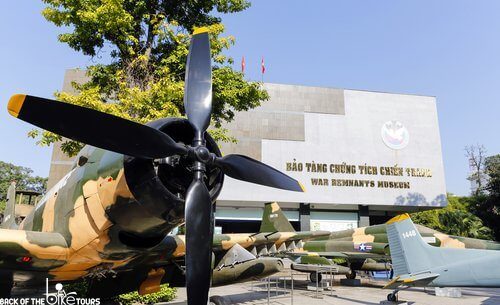
Initially opened in 1975 right after the Vietnam War ended, this museum was named as the Exhibition House for U.S. and Puppet Crimes. This historical site brings a different perspective on the other side of the war to visitors who are keen to discover some insights behind this infamous battle. The War Remnants Museum is comprised of 4 floors and an open-air display of armored vehicles, artillery, and infantry weapons. Starting with the pictures depicting the stories behind the French’s Indochina War and leading to the cause, progress, and ending of the Vietnam War, this museum is definitely a big attraction in Ho Chi Minh City for history buffs.
Museum of Vietnamese History
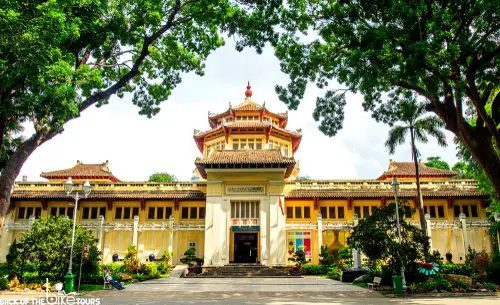
The second most famous museum in Ho Chi Minh City is all about the vivid history of the Vietnamese people. Located within the grounds of Saigon Botanical Garden, the Museum of Vietnamese History takes you to the early ages of ancient Vietnam since the Bronze Age through different feudal dynasties, and ending up until the early 20th century. Not only can you learn about the evolution of Vietnam, but also find great insight into Vietnamese various ethnic groups, notably the Funan, Khmer and Champa people where their expansion, golden days and collapse are chronologically organized. For those who have a big interest in Buddhism and precious antiques, they will be left amazed at multiple Buddhist artifacts, related documents, and valuable pottery items as plenty are showcased throughout the rooms of different dynasties.
To the adventurers at heart, here comes the best part, in this museum lies an intact 200-year-old mummy preserved and displayed under the dim light. And lastly for a modest extra fee, there’s a small theater situated at the end of the museum which is dedicated to the water puppet show that runs every hour except during lunch breaks.
Museum of Traditional Medicine (Fito Museum)
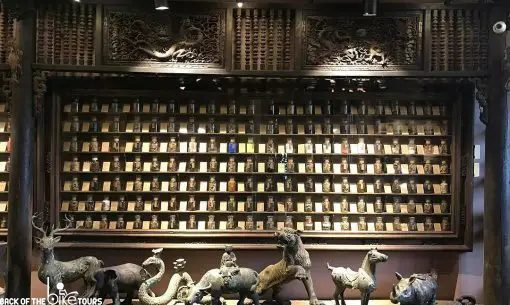
This hidden gem delivers a whole new experience about Vietnamese culture by leading you to the world of ancient medicine and treatment, the Museum of Traditional Medicine is indeed a hidden gem that brings you a brand new experience about Vietnam and Asia. Commonly known as Fito Museum, this building is a five-story gallery framed out of wood and bamboo in traditional Oriental architecture.
The house is a mind-blowing collection of thousands of artifacts and items relating to the world of curing and healing throughout history. A few hours at the museum will take you back to the Stone Age to the present time through a huge display of documents, statues, books, herbs and many more relevant antiques that were used in the process of making medicine. At the end of the trip, you will have a chance to purchase high-quality herbal tea and cures at a shop on the ground floor before you leave.
Cu Chi Tunnels
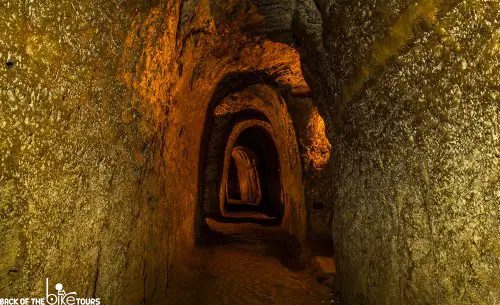
If the War Remnants Museum gives a sneak-peek into how the Vietnam War escalated, then a trip to the Cu Chi Tunnels is where you experience how excruciating life was during the war. Located 70 kilometers towards the Northwest of Ho Chi Minh City, the tunnels are a long and complicated underground community stretching more than 250 kilometers. The whole system combines tunnels, chambers and was manually dugout during the 1940s. It was gradually expanded within the next 2 decades to stage a hidden attack to the capital of Saigon.
Cu Chi housed a great number of Vietnamese locals and guerrillas during the carpet bombing by B-52s in 1969. This is where they spent daily life underneath the ground. Eating, sleeping, treating, and planning out the strategic attack on Saigon during the 1968 Tet Offensive. As of today, Ben Dinh and Ben Duoc are the 2 remaining sites inviting tourists to sneak through the tiny tunnels underground to obtain an actual perspective about life during the war.
Fine Arts Museum
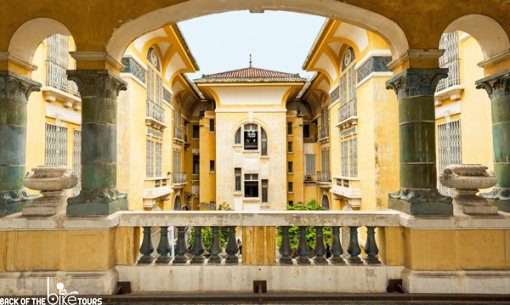
Closely akin to its name, the structure housing the collection of Vietnamese fine arts is the best part that attracts visitors to the site. There’s no wonder why the Fine Arts Museum is seen as one of the most elegant and well-preserved pieces of heritage in the entire city. The vintage Indochine-influenced design brings out a luxury vibe that covers the whole once-called mansion. Another top reason why tourists in Ho Chi Minh City cannot skip this place is the excellent location that the house is set, which is right across the street from the Ben Thanh Market.
The 3-story building illustrates the history of Vietnamese art, which comprises of valuable paintings, sculptures collected for the past ages. Rather than just a delivery of artistic items, Ho Chi Minh City Museum of Fine Arts highlights a significant milestone in Vietnamese history through the ancient Khmer sandstone sculptures and ceramics. An average duration to spend for a visit here should be an hour or 2. In case visitors get tired out, there’s an outdoor garden where they can lay back on the bench.
Even though it is located in the city center, the Museum of Fine Arts is still a hidden gem that many tourists usually miss. If you have another day to spend, make sure you don’t skip this amazing attraction in Ho Chi Minh City!
Best Museums for Families with Kids in Ho Chi Minh City
Other than the 7 top museums in Ho Chi Minh City above, there are 2 off-the-beaten-path attractions existed as a dream world for children. Artinus 3D Art Museum, located in District 7, is an interactive art gallery where the game of 3D magic nurtures imagination and creativity for your kids. With over 100 different 3D painted masterpieces created by Korean artists, visitors can step inside and be a part of the wonderful background. Get ready to indulge in the vibrant optical illusions and snap the coolest shots of your life!
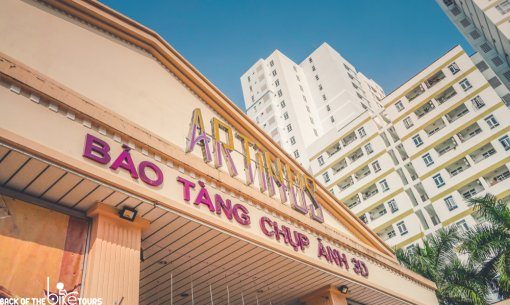
Situated in District 9, Ao Dai Museum is more than just a gallery with artifacts. The whole building sits on an idyllic location whose landscape allows visitors to rejoice in the utmost relaxation. The greenish surrounding conveys a feeling of a Vietnamese summer resort. This museum comprises of numerous wooden compartments that tell the story and development of the proud national costume through the ages. Within an hour or two, you will be amazed at the making of Ao Dai, its crucial role in Vietnamese society, and the interesting variations of Ao Dai in different cultures.
Best Markets in Ho Chi Minh City
Ben Thanh Market
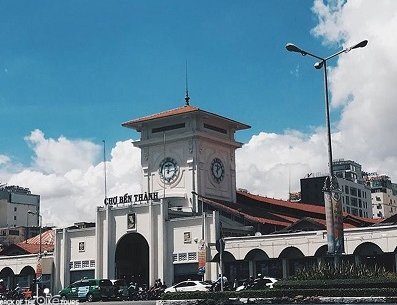
Ben Thanh is the first to pop up when talking about the top-rated markets in Ho Chi Minh City. Ben Thanh has been an all-time favorite icon for over a century since 1914. Witnessing the city’s ups and downs over the past century, Ben Thanh is now a top attraction where tourists can find almost anything they need for a trip in Ho Chi Minh City. From clothing, footwear, accessories to household items, ornaments and souvenirs, almost everything imaginable is available at your disposal.
You may have been told by others to not come over Ben Thanh since it’s a touristy spot, yet this site’s indeed a rendezvous point where you can satisfy your shopping spree while feeding your Instagram with awesome photos.
Ho Thi Ky Flower Market
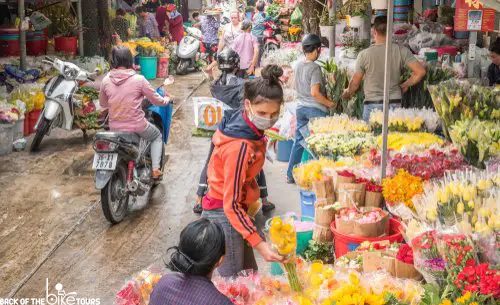
Unlike other markets in the city where multiple goods are sold, Ho Thi Ky is the largest wholesale flower supplier in Ho Chi Minh City. Most of the flowers here are transported from Dalat and Mekong Delta which are known as Vietnam’s biggest plant manufacturers. Right upon entering, visitors will be astonished at the stunningly colorful landscape of various types of flowers occupying both sides of the alley. Orchids, roses, lotus, lilies and many more stand next to each other, which makes the market a captivating scene to look at.
The market comes alive early in the morning when the sun hasn’t come up. This is when vendors get the ball rolling to start a new trading day. During the Vietnamese Lunar New Year, Ho Thi Ky hits the peak of the high season when flocks of Vietnamese locals rush here looking for the best flowers to decorate their homes. Hidden in the center of Ho Thi Ky is Saigon’s Cambodian Market. This is where you can find a big variety of exotic Cambodian food that is run by the only Cambodian community in the city. Don’t hesitate to pass through this little gem for a quick snack when the heat hits Ho Chi Minh City in the afternoon!
Binh Tay Wholesales Market

If Ben Thanh is the biggest retail market in Ho Chi Minh City opened by the Vietnamese, then Binh Tay is the largest wholesale trading center founded and run by the Chinese in Chinatown. Known as Cho Lon in Vietnamese, Binh Tay was constructed back in the early 1900s and is now home to an extensive range of products such as household amenities, clothes, footwear, accessories, and food just to name a few. There’s a small section at the back of the building where customers fill the stomach with an icy drink or a bowl of hot noodle soup from their long shopping day.
Visitors can buy the goods retail with a price just a little higher than normal. These are some useful tips for those who are new to Binh Tay Market:
- Lingering at a stall without a purchase is an annoyance to the sellers.
- Since the market is crowded, be mindful of your own belongings!
Binh Tay is a top-rated attraction in Ho Chi Minh City where travellers gain an impression of the Chinese community, the interesting history about the birth of Binh Tay, and discover a unique trading lifestyle of the Saigonese.
Best French Colonial Buildings in Ho Chi Minh City
Saigon Notre Dame Cathedral (Under renovation until 2020)

The good old classic Notre Dame Cathedral dominates the French-built complex in the city center. As one of the oldest constructions that the French had brought to their colony of Saigon, the cathedral is set right in the heart of the city where you can easily pass by when exploring the city center.
Initially built in 1880, the cathedral was a religious service for the French colonists and Vietnamese Christian believers. The materials were imported from Marseille, especially the prominent red bricks that still retain the vibrant colors until today. In 1962, the cathedral was anointed to be a basilica by Pope John XXIII, and officially named as Saigon Notre-Dame Cathedral Basilica until now.
Saigon Central Post Office
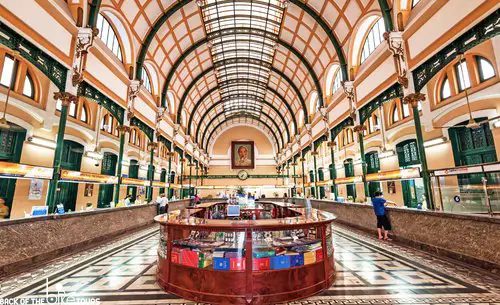
Built in 1891, the good old classic Central Post Office brings pride to the people of Vietnam. It is known as the largest and oldest postal service remained in Vietnam and set right next to the Notre Dame Cathedral. Designed by Alfred Foulhoux, the concourse of this gigantic construction accentuates 2 large painted maps, a mosaic painting of Ho Chi Minh at the back of the hall and 14 old phone booths sitting astride both sides of the interior.
The prominent composition and design are the wow factors that draw attention from the public. The delicate high-vaulted ceiling glazing down the elegant tiled floor invites the tropical sunlight to sneak through the deep-green steel bars. A brilliant artful conception like this encourages fresh air to ventilate the whole inner space. There are 2 small souvenirs shops on the wings where visitors where visitors linger for a few minutes seeking the best souvenirs in Ho Chi Minh City to bring back home.
Opera House (Saigon Municipal Theater)
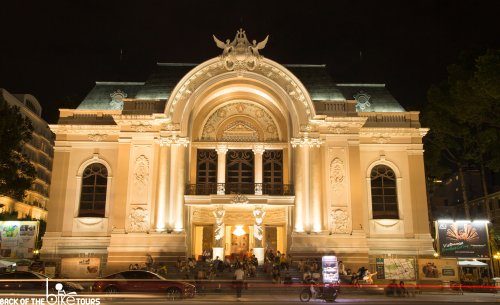
The Opera House, commonly known as Ho Chi Minh City Municipal Theater, is one of the most well-known attractions delivering a typical French appearance. The architecture puffs frequent here to find a polished pearl featuring a vaulted archway that leads them into a gigantic red-velvet swathes inside. That is where 800 seats taking over a three-story building.
Initially built as Opėra de Saigon in the late 19th century by Eugene Ferret, it was a weekly recreational destination for the French VIP colonists. Nowadays, the Opera House is not only a theater but also visual quintessence preserving the French beauty in the city for ages.
The flamboyant architecture at the moment hides an interesting story behind that reflects Saigon’s rocky history. A few statues and details were removed in the early 1940s due to a negative criticism of it being overly ornate. Thanks to this sudden act, the whole ornaments kept in storage were perfectly preserved during the Japanese bombing in World War 2, while the outer patterns and materials were heavily disfigured. When the civil war was over, the adornment was put back on to restore the former glory.
Public visits into the Opera House are not allowed, which means tourists should purchase a ticket to the show and admire the interior at once. The Ballet Symphony Orchestra, opera concert, and many other shows are scheduled nightly. Amongst those, the incredible A O Show is the most talked-about performance that attracts a huge number of visitors to the building several nights a week. All you need to do is reaching out at the box office at the façade or claim your seats via a local travel agency when you want to see the show.
Saigon City Hall

Within a few steps away from the Opera House, tourists will find themselves amazed at the grand City Hall bearing an absolute European beauty. Sitting at the beginning of the gigantic walking street – Nguyen Hue Boulevard, the City Hall is now the People’s Committee of Ho Chi Minh City. First appeared at the turn of the 20th century, the outer design illustrates a perfect blend of the overall French architecture and the delicate touch of colonial ornaments.
In the present time, the building is not open for public visit and since it’s a government service center. The good news is that photography is allowed outside. The City Hall comes alive when the sky goes dark. The yellow walls are lit up and the vast pedestrian street leading to the Saigon River makes it an exceptional scene to admire, especially from above!
Best Holy Shrines in Ho Chi Minh City
Thien Hau Temple
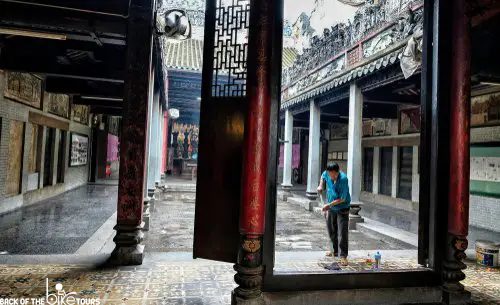
Being one of the oldest holy shrines in Ho Chi Minh City, the Chinese temple Thien Hau was built in the late 18th century by the immigrants fleeing mainland China and dedicated to the Goddess of the sea. This evocative building is honored by both Chinese, Vietnamese locals and even foreign tourists. Entering the temple, people are mesmerized at an utmost East Asian attractiveness reflected through the clouds of incense billow, dim candlelight on the altars, ancient artifacts, and especially the rays of sunlight piercing through the moss-filled roof tiles.
The whole inner space is divided into multiple compartments. Each of them is housing a different God while the middle altar dedicated to 天后 – Thien Hau, the Goddess of the sea. Adorning along the rooftop spines are the sophisticated porcelain dioramas illustrating the ancient Chinese tales. March 23rd of the lunar month is the main ceremony where parades take place inside out of the temple celebrating the honor of the deity.
Giac Lam Pagoda

Next up is one of a more-lesser known but nevertheless a notable historic landmarks of the city. Located in Tan Binh District, Giac Lam Pagoda was built in 1744 during the reign of the Nguyen Lords. It comprises of three main quarters namely the ceremonial hall, the preaching hall and the mess hall. The overall architecture perfectly resembles the traditional Southern Vietnamese style with a touch of Western influence.
Housed inside is the Gautama Buddha dating back to the 18th century, ancient documents and more than a hundred historical statues, some of which are made of bronze. No wonder why the Vietnamese Department of Culture declared this a historical site in November 1988! Even though this site underwent many renovations and even a halt on construction due to the Fall of Saigon, the most prominent shrine is the 7 stupa with the statue of Guan Yin standing at the facade. This enormous tower faces towards the East and stands at 32 meters tall, making it one of the tallest Buddhist towers in the South of Vietnam.
More recently, the Unified Buddhist Congregation of Vietnam staged an opening ceremony for a newly built stupa with the purpose of storing relics of the Buddha. For almost 300 years now, this site remains a remarkable destination that invites many eager tourists to visit and learn its historic secrets.
Buu Long Pagoda
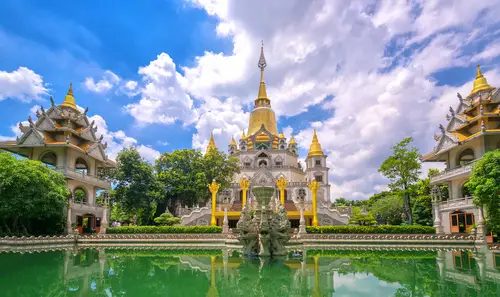
Located on the far east of Saigon, a 45-minute-drive from the city center to District 9 will take you to one of the best hidden and well-kept gems in Vietnam, Buu Long Pagoda. With an expansive 11 hectares of land covered within the History Ethnic & Cultural Park, the Buu Long Pagoda is a magnificent beauty that emphasizes a grand architecture culminating influences from several Southeast Asian countries such as Myanmar, Thailand and Vietnam.
Theravada or “doctrine of analysis”, is the most commonly accepted name of Buddhism’s oldest extant school. The teaching is practiced in this sacred grounds and fits for such a tranquil site. Such a majestic site has made its way amongst the top 20 most beautiful Buddhist temples worldwide as recognized by renowned US magazine, National Geographic.
Buu Long attracts visitors with its grand white temple starring a sharp peaks adorned with gold and yellow copper pointing towards the sky. An emerald pool at the front stunningly reflects the temple’s upper part with its gilded spires and a facade that is decorated with carved dragons along the stairs.
If you think the view is already phenomenal, we haven’t got to the best part yet! With a capacity to hold around 2000 people, this 3 pagoda offers a vista that will make you appreciate the absence of the busy city life, nothing but solemn peace.
Best Parks in Ho Chi Minh City
Saigon Zoo (Botanical Garden)
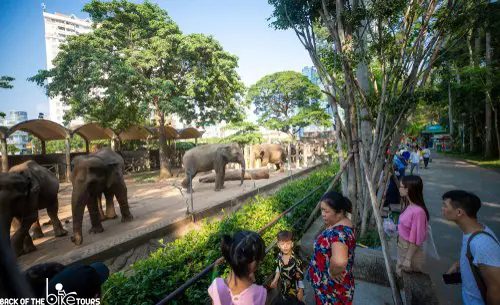
Setting at the end of the grand Le Duan Boulevard, Saigon Botanical Garden is a greenish hideout for a family outing, as well as a house for animals and plants. If you’re seeking an ideal getaway to plan a family picnic, don’t forget Saigon Zoo and let your kids indulge in an open-air garden!
Established in the second half of the 19th century by the French colonists, Saigon Zoo is now home to plenty of mammals, reptiles, and birds. The garden overflows with numerous types of rare orchids and plants. This Ho Chi Minh City attraction has become an iconic getaway for those escaping the heat when wandering around the city center in the middle of the day. There’s nothing better than throwing a picnic in a tranquil setting with the kids under the shade of the greenish tropical trees. You can choose to visit the Museum of Vietnamese History right behind the main gate in the meantime before leaving.
Tao Dan Park
Being famous for owning plenty of parks all across the city, Ho Chi Minh City’s never failed to please visitors loving a green corner. Tao Dan is one of a few places in town where the old-century trees are perfectly preserved. The bird-singing contest held every weekend is an interesting recreation beside other organizational events and family-centric activities.
Tao Dan is parted into 2 different areas facing one another through the avenue of Truong Dinh. The whole complex covers a large area of 10 hectares. Featuring a huge collection of towering century-old trees and tropical plants along the bench line, Tao Dan is the best to be admired early in the morning. The locals in Ho Chi Minh City never forget to take away a cup of coffee after jogging in the park.
Best Skyscrapers in Ho Chi Minh City
Bitexco Financial Tower
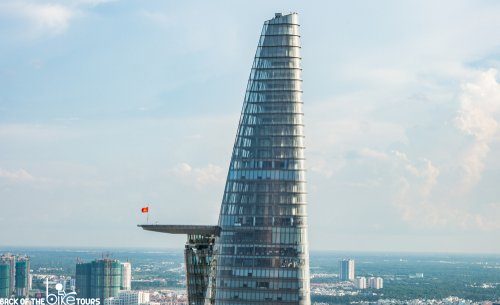
The good old classic Bitexco Financial Tower has never disappointed anyone hunting down a stunning vista of Ho Chi Minh City. Owning 68 stories in total and highlighting the sensational EON Heli Bar on the 52nd floor, Bitexco is the second tallest building in Ho Chi Minh City after Landmark 81. It also features a gigantic sky deck where visitors can admire a 360-degree view of the city. Most people drop by Bitexco for a sip of cocktail at the bar or enjoy a mouthwatering lunch at EON Restaurant. Even though the sky deck is not located on the rooftop like many other famous skyscrapers, it’s indeed a competitive advantage giving prominence to Bitexco.
Landmark 81
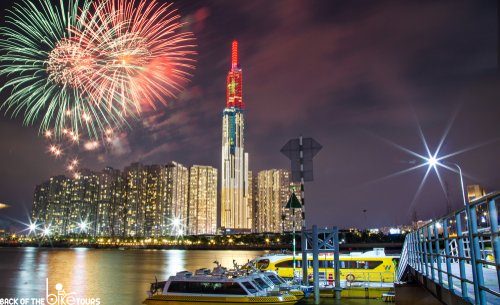
Built in the shape of the bamboo bundle which stands for the great union of the Vietnamese people, Landmark 81defeats Bitexco and becomes the tallest building in Vietnam and Southeast Asia. With 81 stories up and down its 461.5 meters tall, Landmark 81 is situated within the gigantic Vinhomes Central Park on the West of the Saigon River. This towering totem is now a complex of apartments, hotel, food and beverage establishments, conference venues, and shopping center.
With such top-notch facilities, Landmarks 81 comes as a glorious getaway for travellers finding an urban life outside of the touristy downtown. Proudly seen as the national pride and symbol for Vietnam’s economic integration, Landmark 81 attracts visitors with its multi-story observation deck at the very top.
With our 18 top attractions in Ho Chi Minh City above, you now can come up with more than one city tour if spending more than one day here. Simply note them down on your bucket list and mark them all to get the most thorough perspective of Ho Chi Minh City!
